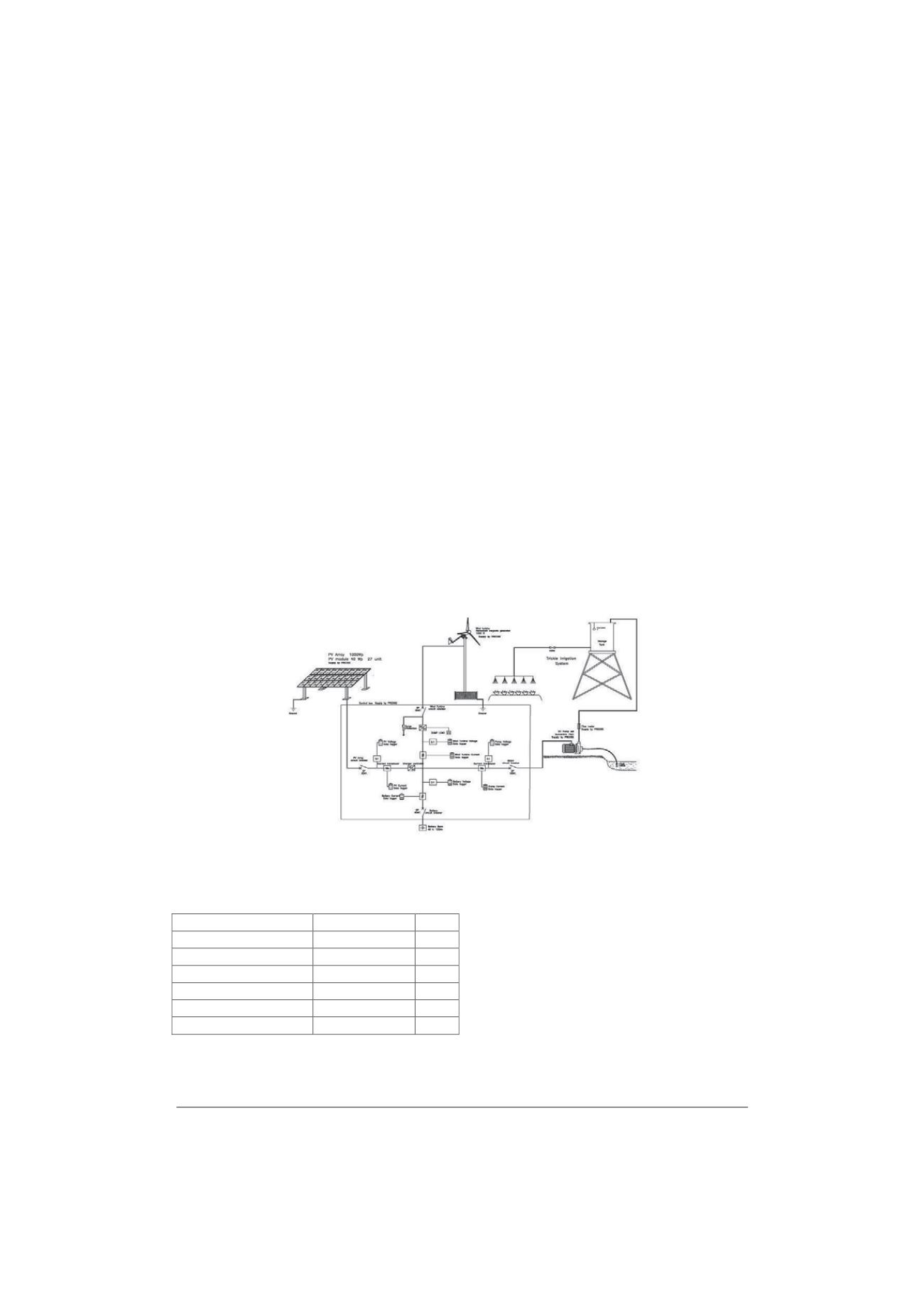
2011 International Conference on Alternative Energy in Developing Countries and Emerging Economies
- 245 -
stand-alone wind energy system and solar energy system
[20]. Water pumping is one of the practice applications.
Furthermore, the systematic and efficient design
procedure for application to either a photovoltaic
powered electric water pumping system or a wind
powered electric water pumping system was proposed.
The main aim of this procedure are: (1) to have either the
PV generator of the fixed pitch small size wind turbine
with direct driven permanent magnet synchronous
generator operate always at its maximum power point and
(2) to have the separately excited DC motor/pump system
operate, also and at all time with nominal speed [21].
Phatthalung province is one of the 14 provinces in
southern Thailand where the gross provincial product was
the thirteen. More than 70% of people are agricultural
farmer. The monthly average global solar radiation
intensity was in the range of 14-18 MJ/m
2
[22]. However,
as the rainy season in southern region of Thailand is
longer than any other regions of the country so the use of
solar water pumping system for irrigation seem to be
impractical or cost-effectiveness due to the larger system.
Thus the use of hybrid solar and wind energy system with
battery storage may be the better choice for water
pumping in rural remote area of Phatthalung province.
Consequently, the main objective of this paper is to
simulate the hybrid solar and wind water pumping system
using transient numerical model under environment
condition of Phatthalung province in southern Thailand.
II. M
ATERIAL AND
M
ETHOD
A. a hybrid solar and wind water pumping system
A hybrid solar and wind water pumping system
consists of a 1.08 kWp PV generator with a controller, a
1.0 kWp wind turbine generator with a controller, a
battery charger controller, a battery bank, a 1,000 L water
storage with 2.5 m head, a 650 W 48 V D.C. surface
water pump with a controller, and a piping system as
shown in Fig. 1. A 1.08 kWp PV generator composed of
24 panels of 40 Wp amorphous silicon solar modules
model BS40 connected 3 panels for parallel and 9 sets of
parallel circuit were connected in series corresponding to
the system voltage of 48 V. The specification of a solar
cell panel under standard testing condition (STC) was
given in Table 1. A 1 kWp wind turbine generator model
Whisper 200 composed of three blades that made of 3
polypro/carbon materials, 1 kW permanent magnet
generator and a controller. The turbine was installed at 15
m hub height and the rotor diameter was 2.7 m. The
characteristics of wind turbine generator were as follows;
cut in wind speed of 3.1 m/s and rated wind speed of 11.6
m/s. A battery bank composed of 4 sets of deep cycle
battery with 48 V and 125 Ah connected in parallel.
Fig. 1. A hybrid solar and wind water pumping system.
TABLE
I
S
PECIFICATION OF A
-S
I
S
OLAR
M
ODULE
U
NDER
S
TANDARD
T
ESTING
C
ONDITION
(S
TC
).
Parameters
a-Si Solar Cell (BS40)
Error
Peak Power (Wp)
40 W
r
10%
Open Circuit Voltage (Voc)
62.2 V
r
10%
Rated Operating Voltage (Vm)
44.8 V
r
10%
Maximum System Voltage
600 V
-
Rated Operating Current (Im)
0.9 A
r
10%
Short Circuit Current (Isc)
1.16 A
r
10%
A transient simulation of a hybrid solar and wind
water pumping system was carried out using the transient
energy system simulation tool (TRNSYS 16.01).
TRNSYS was developed since 1975. First, it is a flexible
tool designed to simulate the transient performance of
thermal energy systems. More than 25 years later,
TRNSYS is a well respected energy simulation tool under
continual development. Many researchers used it as an
efficient simulation tools for such application [23-27]. In
this paper, TRNSYS was used to simulate under the
transient condition of the hybrid solar and wind water
pumping system. The monthly power output produced by
a PV generator and a wind turbine generator as well as


